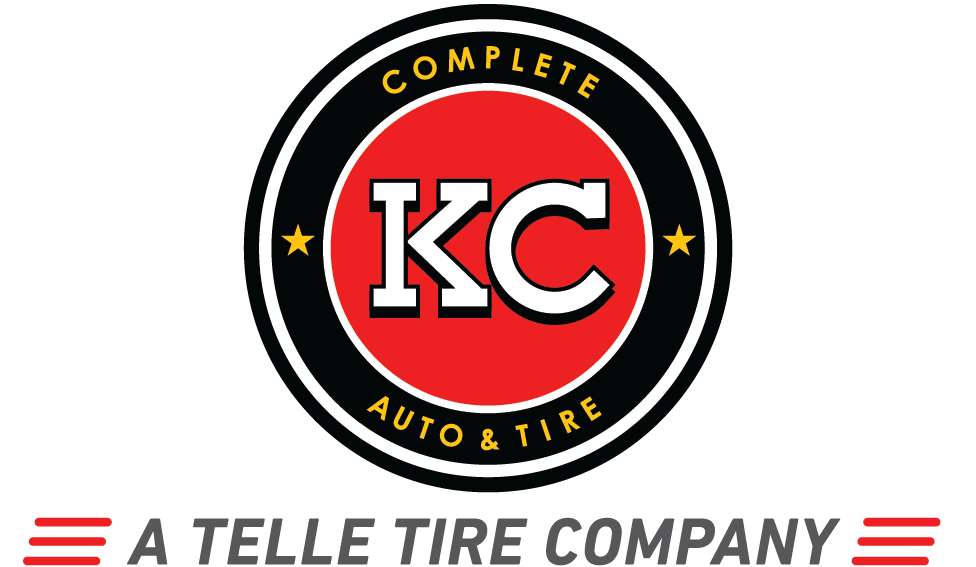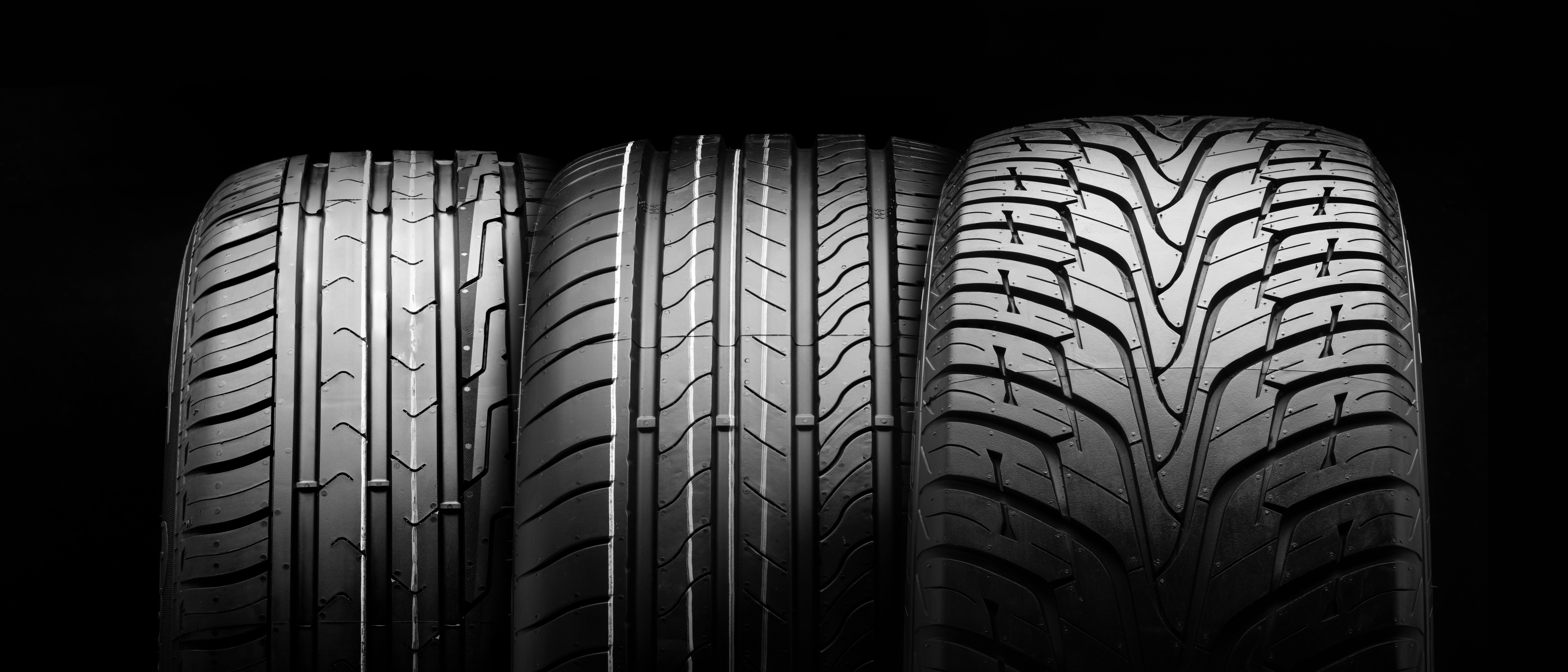How Do New Tires Save Gas Mileage?
With the ever-increasing cost of gas, it’s no wonder drivers are looking for any way they can to save money. Purchasing a more fuel-efficient vehicle is a great start, but achieving the best fuel efficiency of your vehicle depends on a variety of factors, from driving habits to regular maintenance, and even the tires themselves! In this blog, we’ll discuss how tires improve fuel efficiency, which fuel-efficient tires to choose, and how to ensure your new tires are properly installed.
The Role New Tires Play in Gas Mileage
Achieving better fuel economy in your vehicle depends on a variety of factors, but it’s no question that your tires play a major role. In fact, 20% – 30% of fuel consumption and 24% of CO2 emissions from vehicles are actually tire-related.
Your tires are the only part of your vehicle actually touching the road (or at least they should be). The rolling resistance is what mainly affects the tire-related fuel economy, but there is a lot that plays into that, as well.
Rolling resistance is how a tire overcomes inertia and can be influenced by road quality and air drag. This measures the effort your vehicle needs to exert to make the tires roll. Tires with low rolling resistance utilize a carefully designed tread pattern and newer materials that require less energy – whether your vehicle is gas or electricity – to actually move the vehicle. Manufacturers have been working hard to design tires that improve overall gas mileage (which is usually determined via comprehensive fuel economy tests before touting such capabilities to customers).
Worsening Fuel Efficiency? Check the Tires
Owning a vehicle for several years, you get to know how much gas you use on daily commutes or frequent trips. If you’ve been noticing that you need to fill up a little sooner than expected, there could be a number of possible causes. One great place to start is to take a look at your tires to determine if they could be the cause for your lowered fuel economy.
Tire Treadwear
The condition of your tire treads can make a big impact on your fuel economy. In fact, 35-50 percent of the rolling resistance can be attributed to the treads. The shallower the tread pattern, the more fuel-efficient the tires are as there is less resistance. Think of it this way: race cars utilize tires without tread in order to get less resistance to reach higher speeds. However, for the average driver, you want a tire that can grip the road safely and make it easier to brake during bad weather. As tires lose treadwear, their intended performance decreases, especially if it is raining or snowing. Your best option is to choose a fuel-efficient tire that offers a shallow-tread rib design. Chunky, off-road tires will significantly decrease fuel efficiency, so keep those reserved for your trail adventures.
Tire Size
When it comes to tires, size does matter. Larger tires will decrease fuel economy because they’re heavier and have a higher rolling resistance than smaller sizes. However, determining which size tire is better for your vehicle will depend on the type of driving you do. If you’re frequently driving in stop-start traffic, smaller tires are better as they require less power to move, promoting better fuel economy. Driving on the highway, you’ll actually see increased fuel efficiency with larger tires because once you’re moving, the engine is actually working less to make the wheel cover the travel distance – your engine actually works harder with smaller wheels to cover that same distance at the desired speed.
It’s important to choose the ideal tire size for your vehicle based on manufacturer recommendations, as well as what kind of load capacity your vehicle needs to handle.
Proper Inflation of the Tire
Looking for an easy solution to improving fuel economy? Check your tire pressure. Proper inflation per vehicle manufacturer recommendation is one of the best ways to improve fuel economy. Low tire pressure causes the rubber to bulge where it meets the road, creating more friction with the pavement. Even being just 20 percent underinflated can increase your fuel consumption by 10 percent because it creates more resistance when trying to get the vehicle moving.
Seasonal Air Pressure Recommendations
Driving on underinflated tires does not provide your vehicle with the right support, putting additional strain on the engine and making it work harder to accomplish the same driving performance. Of course, overinflating tires is not the correct solution either, as that comes with its own disadvantages and safety risks.
It’s also important to note that your recommended tire pressure may vary depending on the season you’re driving in. Cold temperatures cause the air in your tires to contract, leading to lower tire pressure. Warmer or hotter temperatures cause the air to expand, increasing the pressure inside the tire. If you fill the air in your tires while it’s cold and the weather suddenly warms, your tire pressure will rise, sometimes to the point of overinflation if you’ve added too much. On the other hand, if you are right at or slightly below your recommended PSI in decent temperatures that suddenly drop, you are at risk of driving on underinflated tires later.
Wheel Size, Material, and Alignment
If everything checks out with your tires, the wheels themselves could be hurting your fuel efficiency. Many vehicles are equipped with standard steel wheels that can, unfortunately, add quite a bit of weight. Depending on the overall weight of your vehicle, you may be able to install a lighter alloy wheel that will decrease the weight of the vehicle and minimize resistance for a more fuel-efficient drive. However, some alloy wheels will require wider tires that would ultimately cancel out any benefits you’d get from a lighter option, so make sure it’s worth it before making the investment. If you do decide to change out the wheels, be sure the installation is done by an experienced shop that will ensure everything is properly aligned so it doesn’t hurt your gas mileage or prematurely wear down the tires.
Best Fuel Efficient Tire Options Available
If you’re in the market for fuel-efficient tires, there are plenty of tire choices to shop that will meet your needs. Many of the most well-known and trusted tire brands offer tires designed to help save on fuel consumption, it’s just a matter of selecting the model that fits your vehicle’s requirements. Below are some of the best options when you’re looking for low-rolling-resistance tires:
- Continental ProContact: Continental ProContact tires have proven to be quiet, durable, and drive smoothly. They drive best on dry roads and, while they can handle other weather conditions, may have less traction in snowy conditions. Continental also offers an 80,000-mile warranty on this model.
- Goodyear Assurance Fuel Max: The Goodyear Assurance Fuel Max tires provide great stability in dry conditions while providing great fuel economy. While they are good in wet or lightly snowy weather, they do lose some stability, so use caution in inclement weather.
- Michelin Energy Saver A/S: The Michelin Energy Saver has proven itself as an energy saver while offering a smooth, quiet ride. It offers great traction when driving in almost any condition all year long. However, for those who decide to go off-road, it may be a bit noisy.
- Bridgestone Ecopia EP422 Plus: With the Bridgestone Ecopia, get quiet, smooth-riding tires with reliable handling, even in wet conditions. The biggest downfall with this option, however, is poor stability in extreme winter conditions, so it’s best to use these in spring, summer, and fall, then swap to winter tires when the time comes.
- Continental CrossContact LX25: Achieve great fuel efficiency, a smooth ride, and stability at higher speeds with the Continental CrossContact tires. These tires are reliable, even in light, snowy conditions, but they may create a bit more noise on bumpy roads.
- Michelin Defender T+H: The Michelin Defender provides good handling, a smooth, quiet ride, and excellent braking performance in almost any situation. Michelin also offers an 80,000-mile warranty. The biggest downfall with these is they are a bit more expensive than other fuel-efficient tire options.
- Continental TrueContact Tour: The Continental TrueContact Tour offers good stability and reliability, safe cornering capability, and predictable handling, even in wet conditions. The tire compound it’s made of offers low rolling resistance, but the tires don’t have the best traction on icy roads.
- Pirelli P4 Four Seasons Plus: These Pirelli tires offer stability, low fuel consumption, excellent performance even in slippery conditions, and provide traction year-round. If you plan on doing any off-road driving, these tires are not going to be the best choice as they are better equipped for highway driving.
Can I Have Worse Fuel Efficiency After Installing New Tires?
Did you recently install new tires and notice your gas mileage actually decreased? Don’t panic. Because brand-new tires obviously have better treads, they’ll create more rolling resistance than what you had with your old tires, in effect causing your fuel economy to decrease. Just remember that this is only temporary. As you continue to drive, the treads will wear some, leveling out your gas mileage and bringing it back to a range you’re more familiar with (if not better).
Common Mistakes When Buying New Tires
If you’ve ever had to purchase new tires, you will know that you can’t simply choose any tire off the rack. You need to make sure it fits your vehicle’s size and load capacity requirements, among other needs. Some of the most common mistakes buyers make when purchasing new tires include:
- Choosing tires with the incorrect speed rating for the vehicle
- Purchasing tires with the incorrect load rating index requirements for the vehicle
- Buying tires for the wrong season
- Buying the wrong size tires
- Deciding to purchase lower-quality, cheap tires
- Buying a completely different brand or model tire than the others still on the vehicle, resulting in mismatched tires
Improve Your Fuel Efficiency with New, Professionally Installed Tires
Making even seemingly small changes to your vehicle could be enough to improve your vehicle’s fuel efficiency. Being sure to pay careful attention to your tires can help save you money now and in the long run. When it’s time to invest in new tires, reach out to Telle Tire. Our technicians will be able to help you select the right fuel-efficient tires for your vehicle and ensure they’re installed correctly!


